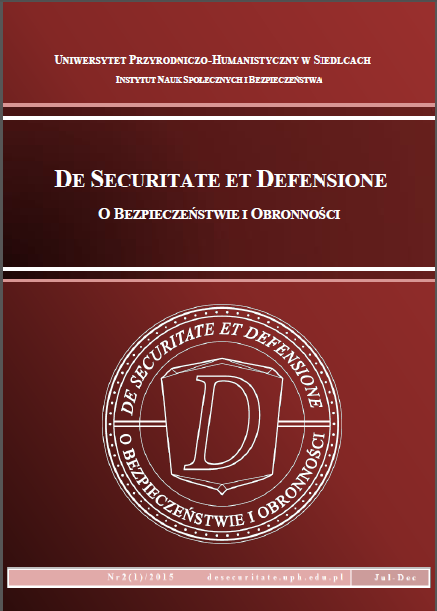Bezpieczeństwo żołnierzy. Czy gaz łzawiący i oślepiająca broń laserowa powinny być legalną bronią? Uwagi na tle postępu technologicznego
Słowa kluczowe:
international law of armed conflict, prohibited weapons, tear gas, blinding laser weapons, autonomous weaponsAbstrakt
International law of armed conflict governs the conduct of hostilities and includes rules designed to ensure “humanizing” military actions. One of these principles is the prohibition of causing unnecessary suffering of soldiers. Based on this principle many prohibitions on the use of certain types of weapons were introduced to treaty law of armed conflict, for example chemical weapons, biological weapons, anti-personal landmines, cluster bombs and blinding laser weapons. Some of these prohibitions are challenged especially given the technological and medical development. Questions are asked, including “is it better to be dead or blind?” which are an argument in favor of regulating the use of certain weapons and not their complete ban, as in the case of blinding laser weapons, which applies to this question. The article presents arguments for and against prohibiting the use of above all blinding laser weapons and tear gas. On this basis, the reader will be able to form an opinion on the title topic.




